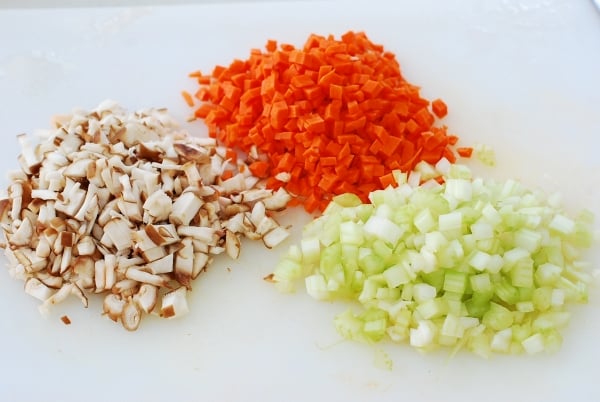
Are you a fan of porridge (juk, 죽, in Korean)? Porridge is hugely popular in Korea as a breakfast or a light meal. Because it’s healthy and easy to digest, porridge is also commonly served to the ill, elderly, and babies. Dakjuk (닭죽, chicken porridge) is a family favorite! This chicken-flavored creamy porridge is one of the best when it comes to comfort food, especially on cold winter days!
Made with all sorts of grains, proteins, and vegetables, there are endless variations of porridges in Korea. Along with this chicken porridge (dakjuk), red bean (patjuk,팥죽), pumpkin (hobakjuk, 호박죽), pine nuts (jatjuk, 잣죽) and abalone (jeonbokjuk, 전복죽) porridges are some of the popular varieties.
Chicken stock and meat for porridge
Traditionally, chicken porridge is made with chicken stock and pulled chicken meat. Often, it’s made with leftover chicken soup, such as dak gomtang (닭곰탕) or baesuk (백숙).
You can simply boil a small chicken or a few bone-in chicken pieces with onion, garlic cloves, ginger and scallions until the chicken is tender. Enjoy some of the boiled chicken just with salt and pepper if you like, and use the leftover stock and meat for porridge.
Alternatively, you can simply use good quality commercial chicken stock and boil some boneless chicken pieces in the stock.
Often, I also make porridge with leftover roasted chicken. If you want to roast chicken at home, this Thomas Keller’s roast chicken recipe is really good. It’s absolutely effortless to make yet so tasty and moist. The leftovers from a store-bought rotisserie chicken work as well.
After enjoying the roast chicken, make chicken stock with the remains by boiling the bones in a pot along with some aromatic vegetables. What a great use of the remains of roast birds!
What type of rice to use
Dakjuk can be made with either short grain rice or sweet rice (aka glutinous rice, chapssal 찹쌀 in Korean). I prefer sweet rice as it gives the porridge a creamier texture and a sweeter taste. Traditionally, the rice is stir-fried in sesame oil before the liquid is added. This adds a deep nutty flavor to the porridge and coats the rice with oil, thus yielding a better porridge texture.
Vegetable options
Typically, dakjuk also features some chopped vegetables. In this recipe, I used carrot, celery, and mushrooms. Zucchini, green cabbage, potato, and garlic chives are all good options. You can chop them finely or roughly, depending on your preference. Adjust cooking time appropriately.
More porridge recipes
Turkey porridge (with Thanksgiving leftovers)
Jeonbokjuk (Abalone porridge)
Hobak juk (pumpkin porridge)
Patjuk (sweet red bean porridge)
For more Korean cooking inspirations, follow along on YouTube, Pinterest, Twitter, Facebook, and Instagram.

Ingredients
- 1 cup short grain rice or sweet rice glutinous rice
- 6 cups chicken stock (see notes)
- 1 to 1-1/2 cups pulled chicken seasoned with salt, garlic, sesame oil, pepper
- 1 medium carrot
- 1 celery stalk
- 3 to 4 mushroom caps
- 2 tablespoons sesame oil
- Optional garnishes:
- Finely chopped scallion
- Sesame seeds
Instructions
- Soak the rice for about an hour, and drain.
- Finely chop the vegetables.
- Add 2 tablespoons of sesame oil to a medium size pot. Add the rice and stir-fry for a few minutes over medium heat, until the rice turns translucent.
- Pour the stock to the pot and bring it to a boil. Continue to cook, stirring occasionally for about 20 to 25 minutes, or until the rice is cooked and softened. Start with medium low heat, but reduce to lower heat when the stock is visibly reduced. Stir occasionally (more frequently as the stock is reduced) so the rice doesn't stick to the bottom of the pot.
- Stir in the vegetables, cover, and simmer for an additional 10 to 15 minutes until the vegetables are soft. You can also adjust the consistency of the porridge to your taste by adding more stock or water.
- Since the chicken is already cooked, stir it in during the last few minutes of simmering, leaving some to use as a garnish, if desired. You can add salt and pepper at the end or serve on the side. Serve hot with the optional garnish on top.
Notes
This dakjuk recipe was originally posted in March 2010. Here’s the much needed update with an improved recipe and new photos.






























